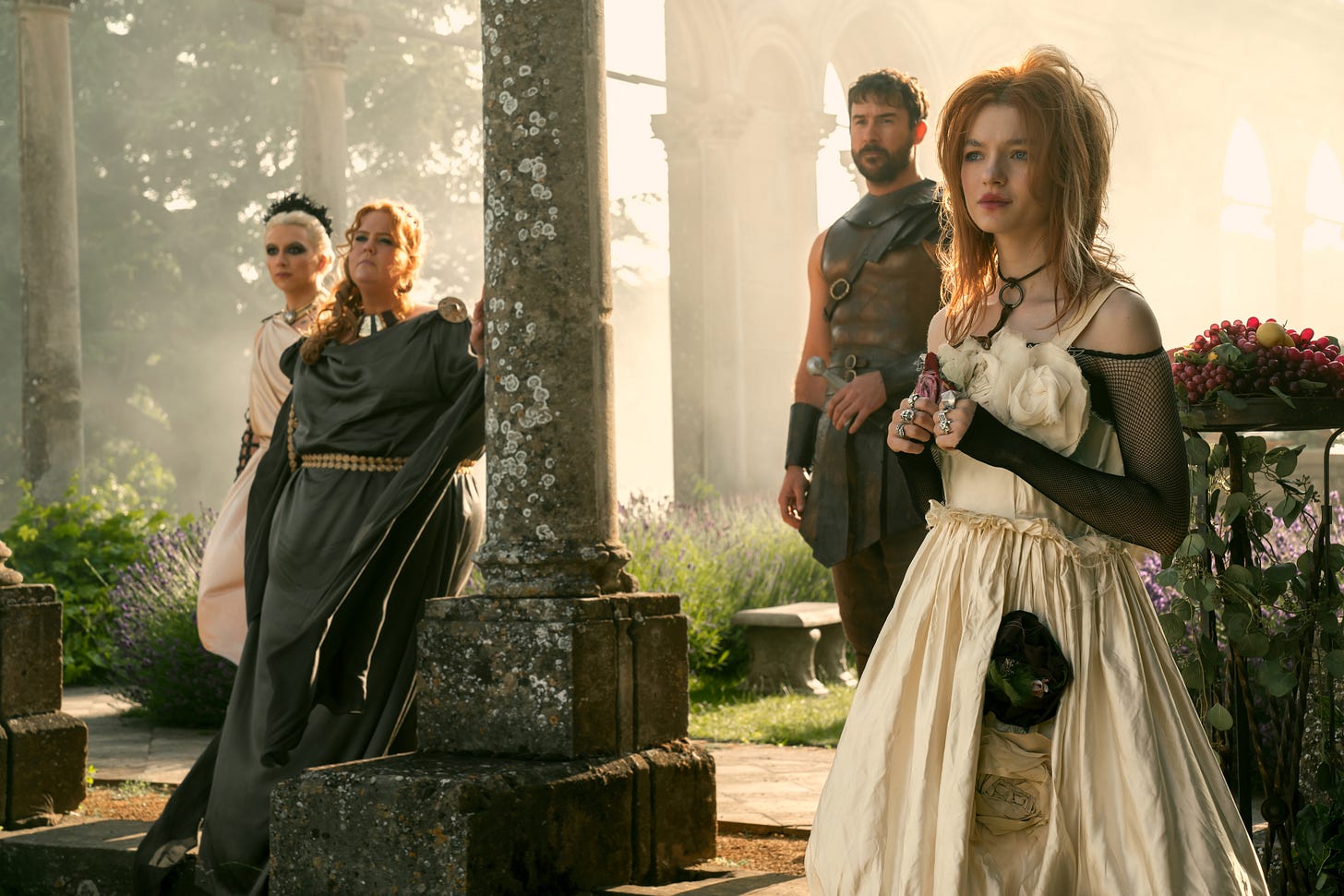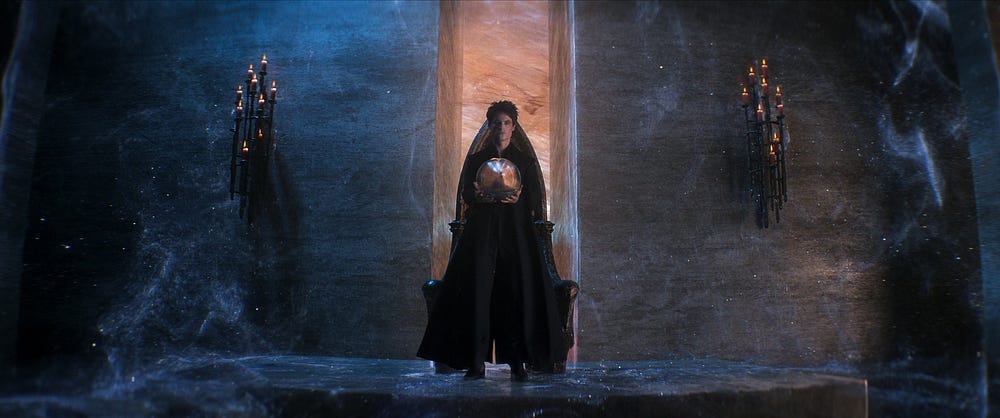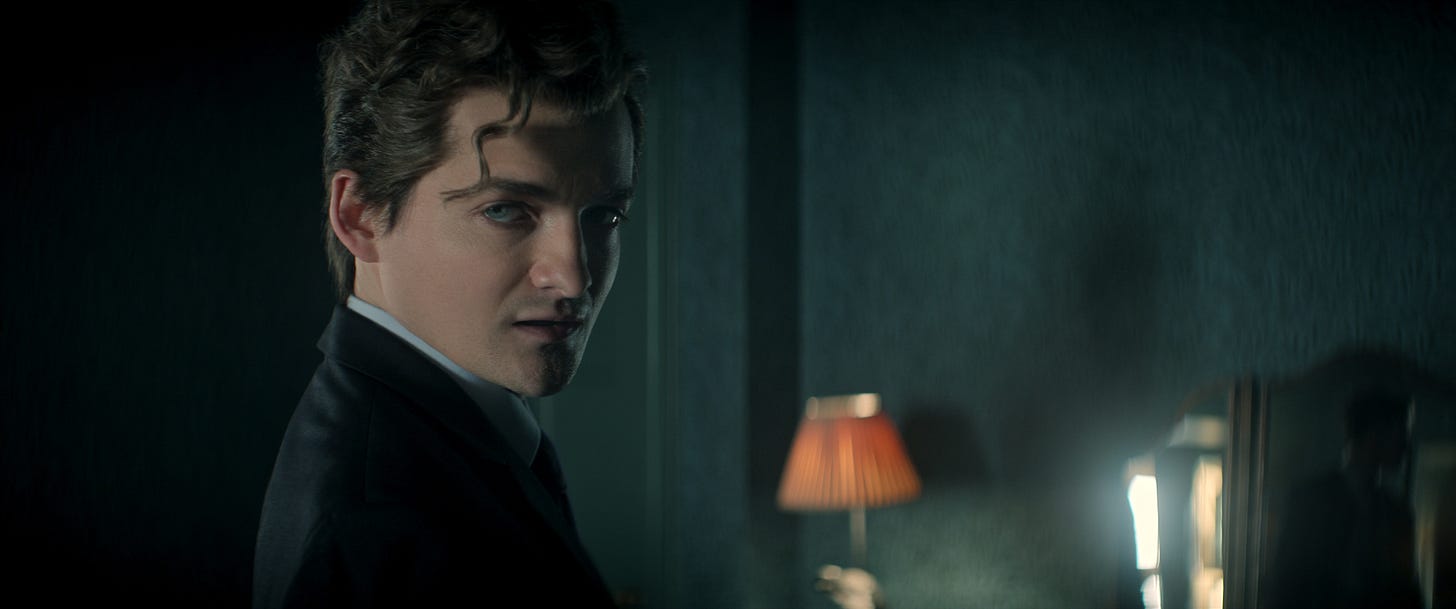Review: ‘The Sandman’ (Season 2, Vol. 1)
The dream is very much alive in Netflix adaptation of Neil Gaiman's epic and groundbreaking comic book series
Before thought and time, they were there: The Endless, avatars of the fundamental ideas upon which the universe would be built. As multitudes of species dreamt up their gods and demons, The Endless were already present — watching and guiding from the shadows.
The fundamental ideas they govern gave them their names: robed Destiny with his book that records all that ever was, is, and ever will be. Kind Death, who welcomes all beings into life and guides them on to what comes next when they die. Mysterious Dream, the king of all stories, fantasies, and imagination. The lost Destruction, who 300 years ago abandoned his post as the personification of violent ends, seeing that humanity was well on its way to annihilate itself without his help. The self-obsessed Desire and their twin, Despair, two sides of intense emotion. And finally, youngest Delirium, who once was Delight, but is now quite mad.

Soon, gods, demons, spirits and legends formed from mortal beings’ thoughts and dreams. And The Endless watched, only interfering when deemed necessary in accordance to their domains and responsibilities. Destiny would witness, Destruction would destroy, Dream would inspire, Desire would seduce, Despair would crush, Delirium would bewilder, and Death would be there at the end, to turn off the light when everyone else had left.
First released in 1989, Neil Gaiman’s The Sandman, became an instant hit and is widely considered one of the most acclaimed comic book series ever written. Penned by Gaiman and brought to life by a host of talented artists like Sam Kieth and Mike Dringenberg, the series tells the story of Dream — also called Morpheus, the Sandman, among many other names — and his siblings.
Told through a mix of larger story arcs and shorter, stand-alone tales, the narrative often ventures from our modern era into the distant past, where Morpheus encounters a wide range of historical and legendary figures. When the original series ended in 1996, it had already pushed the boundaries for what a comic book could be, cementing its place as a cultural touchstone.
Considering its popularity, it’s almost unbelievable that it took decades for a proper film or TV adaptation of The Sandman to see the light of day. But it wasn’t for lack of trying. Warner Bros. has held the rights for decades, with the first attempts at an adaptation dating back to the 1990s.
One of the earliest versions was a screenplay by Roger Avary of Pulp Fiction fame. However, due to creative differences with producer Jon Peters — and after Neil Gaiman famously called it “the worst screenplay he had ever read” — the project was shelved.
The project saw a brief revival in the 2010s when Joseph Gordon-Levitt became involved. He was set to produce, direct, and star as Dream, but in 2016, the project was once again shelved, citing creative differences with the studio.
It was Netflix that would first successfully adapt Dream’s journeys to the screen. In 2022, the long-awaited first season finally arrived, starting the story from the beginning.
Season one focused on Morpheus’ escape from his century-long imprisonment by the mortal magician Roderick Burgess and his subsequent quest to rebuild his realm, The Dreaming.

This journey involved battling the rogue, eye-eating nightmare known as the Corinthian, revisiting his friendship with the immortal Hob Gadling, and confronting the powerful dream vortex, Rose Walker.
The second season of Netflix’s The Sandman adapts some of my favorite The Sandman stories to the screen. On our return to The Dreaming, we meet Morpheus (again played by the perfectly cast Tom Sturridge) busy putting the final touches on rebuilding his domain, which was in shambles after his long imprisonment.
Morpheus remembers Nada (played by Umulisa Gahiga), Queen of the long-gone First People, whom he condemned to Hell ten thousand years ago after she refused his love. As he looks back at his own time as a prisoner in the magically warded cells of Roderick Burgess’ dungeons, he decides to right that ancient wrong and journeys to Hell, ready to bargain or battle with Lucifer Morningstar (again played beautifully by Gwendoline Christie) to free her.
Returning to Hell, he finds Lucifer has abdicated the throne, thoroughly fed up with it all. Handing the Key to Hell over to a surprised Morpheus, she leaves him in charge. Now he is the owner of Hell, a burden he must quickly pass on to someone else.
But who? The now homeless demons, led by Azazel (Will Coban), desperately want it back. How about the Old Gods of Asgard (no, not the band)? Odin (Clive Russell) and his sons Thor (Laurence O’Fuarain) and Loki (Freddie Fox) might be a good choice. Whatever his decision, Morpheus must choose quickly, because they are all at his gates, along with faeries, angels, gods, and representatives of the forces of Order and Chaos. They all want the Key to Hell. What was it that John Milton wrote? “Better to reign in Hell than serve in Heaven.”
And that’s how it begins. This second season of The Sandman is divided into two volumes. The first volume consists of six episodes: “Season of Mists,” “The Ruler of Hell,” “More Devils Than Vast Hell Can Hold,” “Brief Lives,” “The Song of Orpheus,” and “Family Blood.”
The second volume, released a few weeks later, continues with the next five episodes, plus a bonus episode. They are: “Time and Night,” “Fuel for the Fire,” “The Kindly Ones,” “Long Live the King,” “A Tale of Graceful Ends,” and the bonus episode, which adapts the beloved standalone story, “Death: The High Cost of Living.”
These episode names should be very familiar to those who have read The Sandman. Some of my favorite stories are here, such as “Season of Mists” and especially “The Song of Orpheus.” That said, while these stories will be instantly familiar to fans, they are still adaptations, with arcs woven together and changes made to make it more suitable for the TV series format.
So, is it good? The short answer is yes. It’s very good. But as a second season, how you like it might depend on how you liked the first one and, of course, which The Sandman stories are your favorites. For me, I was giddy seeing some of my favorite Neil Gaiman stories on the list of episode titles. To see them come alive on screen. To see the Faerie Court arrive to watch Shakespeare. Puck (played by Jack Gleeson ) reciting “A Midsummer Night’s Dream.” To hear Orpheus (played by Ruairi O’Connor) sing in the Underworld. Chills. Chills and tears.
However, seeing these stories on the episode list made me nervous. It can’t be easy to get them right, but showrunner Allan Heinberg and director Jamie Childs, who directed all of the episodes this season, got the adaptation spot on. Highly approved. No, more than that. This was near-perfect.
The casting continues to be one of the show’s greatest strengths. Tom Sturridge is, of course, Morpheus. He is so perfect for the role that you’d be forgiven for thinking he was grown in a lab to play this character.
The other Endless are back too, of course, along with some new faces. They might not look exactly like in the comic books (it was the late 80s, after all), but they all bring these characters to life in a way that will make fans of the comics shed tears of joy.
The obvious example from the first season was, of course, Death, here played beautifully by Kirby Howell-Baptiste, in scenes that will hit you straight in your heart. Mason Alexander Park and Donna Preston are again both suitably disturbing as Desire and Despair, respectively.
And the newcomers are just as impressive, capturing the essence of their characters from their very first scenes: Adrian Lester as Destiny, Esmé Creed-Miles as Delirium, and Barry Sloane as Destruction. They are not only cameos and smaller roles, but all have big parts to play, as they should.
Visually, the second season is a definite step up. While the first season was great, some of the CGI felt weightless, and some locations were a bit heavy on the bluescreen. This time around, it’s a different story. The fantastical realms, such as The Dreaming, the Underworld, and Hell, feel more tangible, and the physical locations, such as the island of Naxos in the Aegean Sea and Paris during the French Revolution, have a touch of the otherworldly to them, like in pages from ancient myths.
The second season of The Sandman is off to an amazing start. To me, this is an improvement on something that was already excellent, and I very much look forward to covering the second volume of this season in a follow-up article, where I will explore more of this universe, its inhabitants, and stories, and some of the behind-the-scenes shenanigans.
But for now, enjoy The Sandman Season 2, Vol. 1.
Oh, and sweet dreams!
If we shadows have offended, Think but this, and all is mended, That you have but slumber'd here While these visions did appear. And this weak and idle theme, No more yielding but a dream, Gentles, do not reprehend: if you pardon, we will mend: And, as I am an honest Puck, If we have unearned luck Now to 'scape the serpent's tongue, We will make amends ere long; Else the Puck a liar call; So, good night unto you all. Give me your hands, if we be friends, And Robin shall restore amends ― William Shakespeare, A Midsummer Night’s Dream








